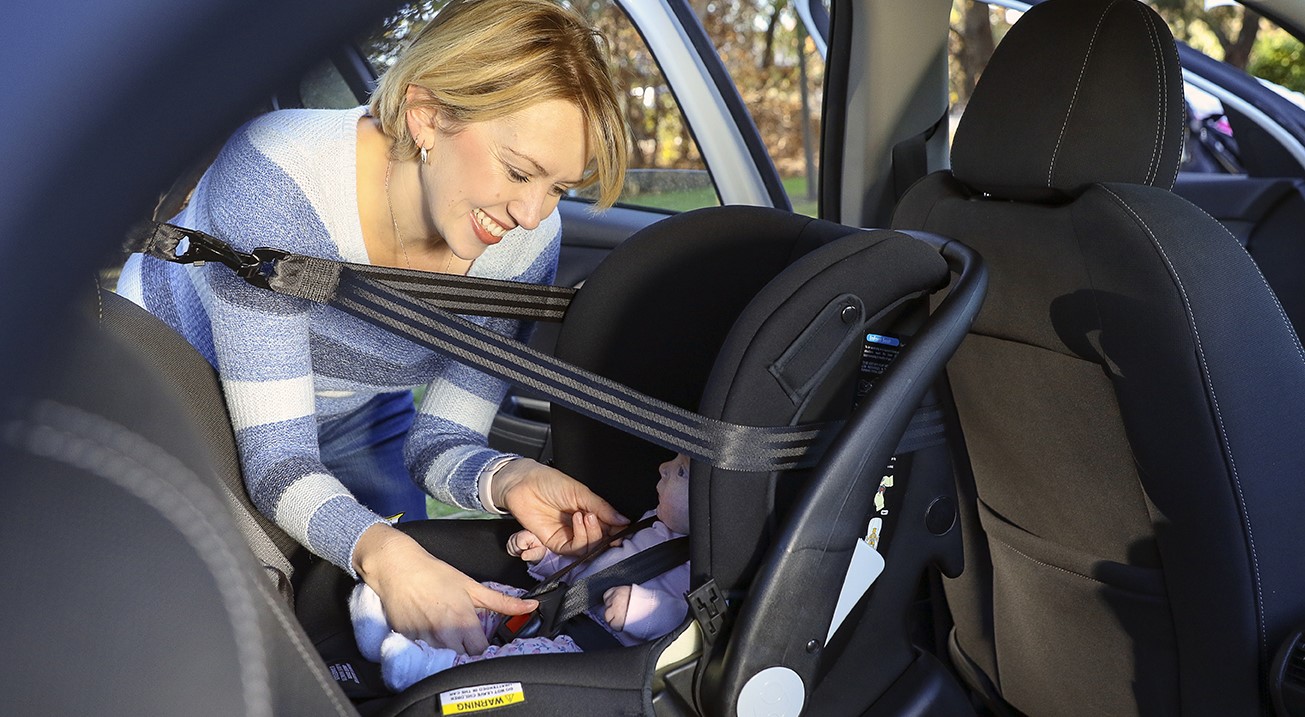5 tips for installing a child restraint in your car
 Becoming a parent can be daunting, and on top of everything else, you feel like you need to develop the same skill set as a semi-professional builder.
Leading up to the birth of our first child, I’ve put together countless baby-related items, from a cot and stroller to a bassinet and mini bookshelf.
At some point in the next few weeks, I’ll need to consider buying a child restraint for our car.
As a person who struggles to construct the simplest IKEA products, I’d usually get the RAA Child Safety Centre to install the restraint, but due to COVID-19 restrictions, it’s not able to provide appointments in person.
Don’t worry though – while the team at the RAA Child Safety Centre can’t see you in person, they can still help.
RAA child safety expert Belinda Maloney says the Safety Centre is conducting virtual appointments to help parents and carers fit their restraints correctly.
“We’re using video conferencing to demonstrate how to correctly fit specific types of seats,” she says.
Becoming a parent can be daunting, and on top of everything else, you feel like you need to develop the same skill set as a semi-professional builder.
Leading up to the birth of our first child, I’ve put together countless baby-related items, from a cot and stroller to a bassinet and mini bookshelf.
At some point in the next few weeks, I’ll need to consider buying a child restraint for our car.
As a person who struggles to construct the simplest IKEA products, I’d usually get the RAA Child Safety Centre to install the restraint, but due to COVID-19 restrictions, it’s not able to provide appointments in person.
Don’t worry though – while the team at the RAA Child Safety Centre can’t see you in person, they can still help.
RAA child safety expert Belinda Maloney says the Safety Centre is conducting virtual appointments to help parents and carers fit their restraints correctly.
“We’re using video conferencing to demonstrate how to correctly fit specific types of seats,” she says.
We’re talking customers through the installation in an easy-to-understand, visual way.”RAA’s Child Safety Centre team has been live streaming safety advice for parents and carers since the Covid-19 crisis forced the suspension of face-to-face appointments at the Mile End site. However, these live streaming sessions will continue even once the Child Safety Centre resumes face-to-face appointments. In case you’re wondering why you should do your research before setting up a child restraint, a recent audit performed at suburban Adelaide childcare centres found 95 per cent of restraints were not installed correctly. Whether you’re installing a child restraint for the first time or making some alterations, here are some tips to guide you through the process.
1. Choosing the right restraint
It all begins at the shop. If you buy the incorrect restraint, you’ll be in strife from the start. By law, children under 6 months need a rearward facing restraint and can’t travel in the front of a vehicle that has 2 or more rows of seats.
Children under 6 months need a rearward facing restraint. Image: RAA

